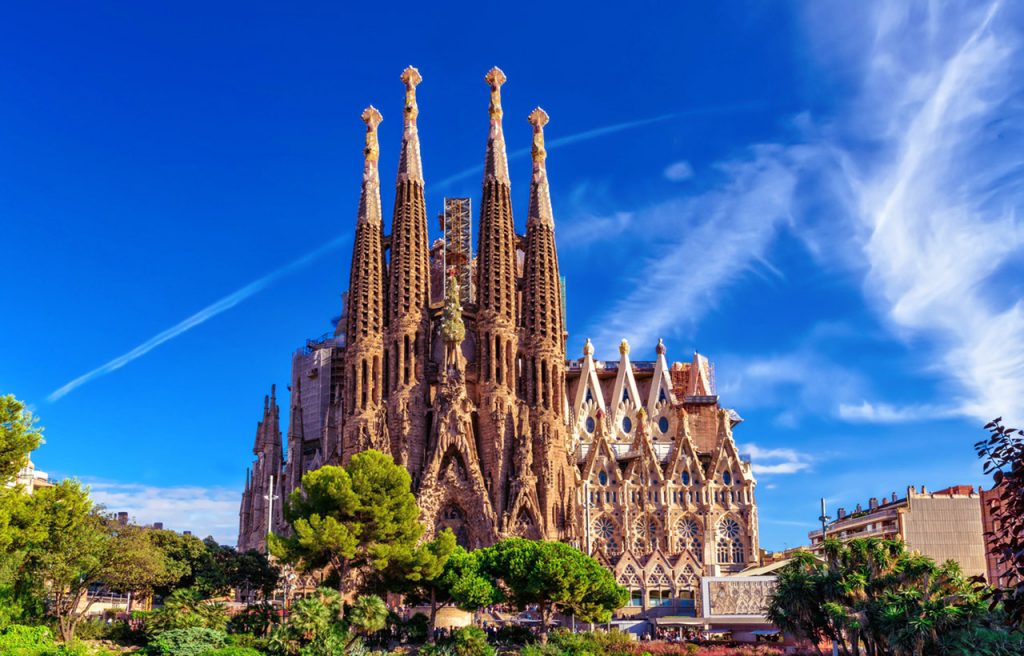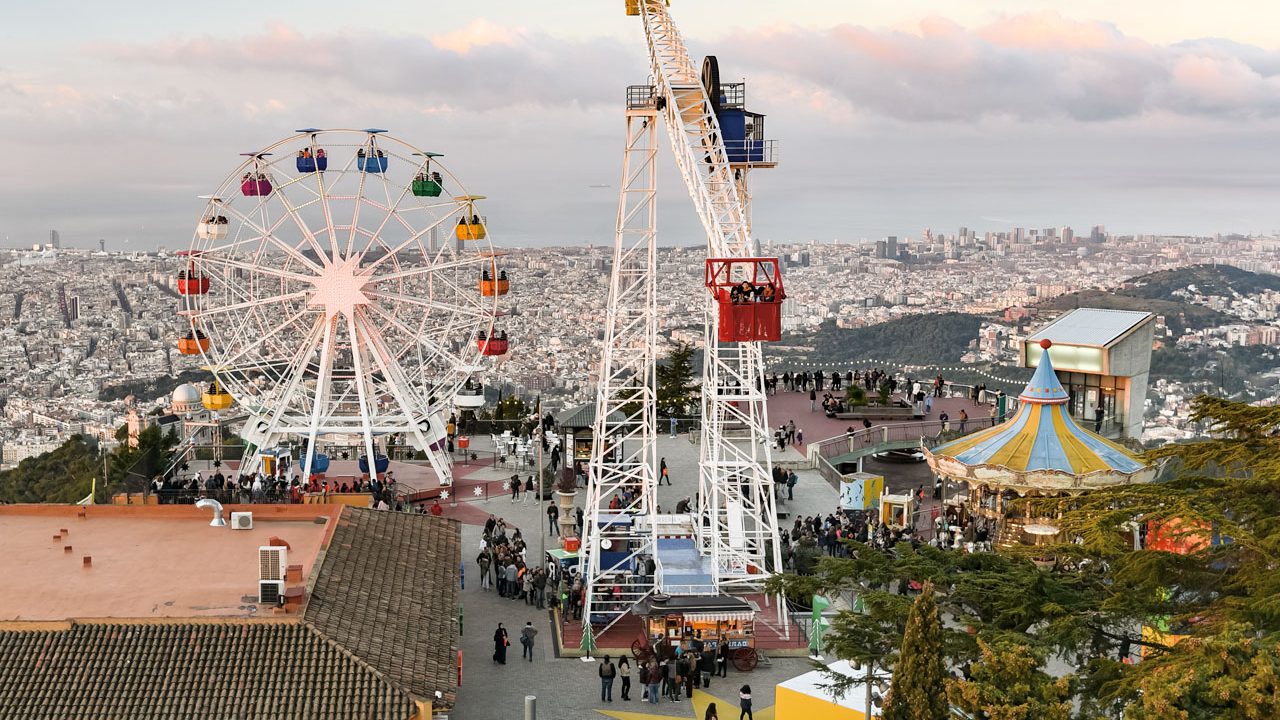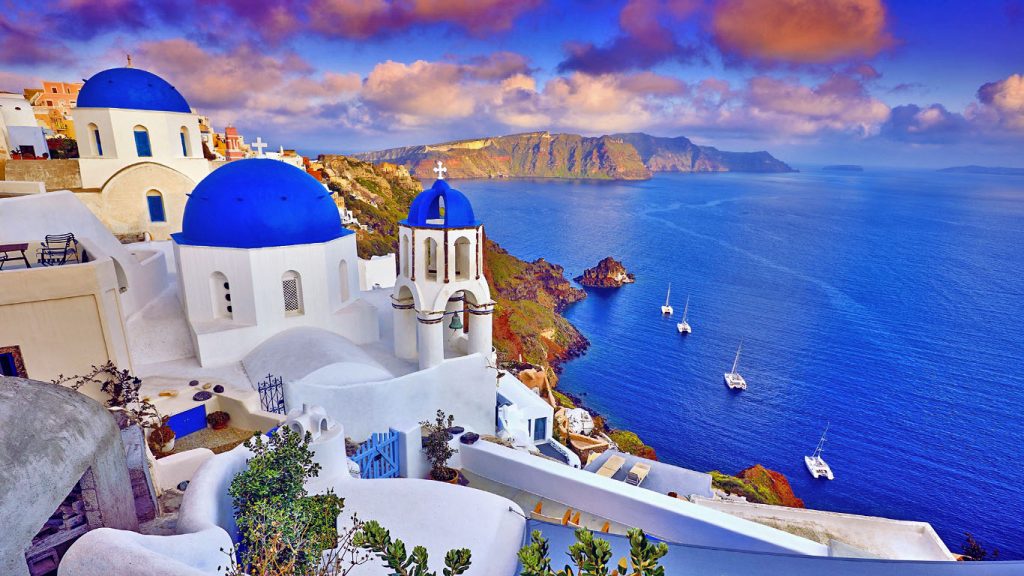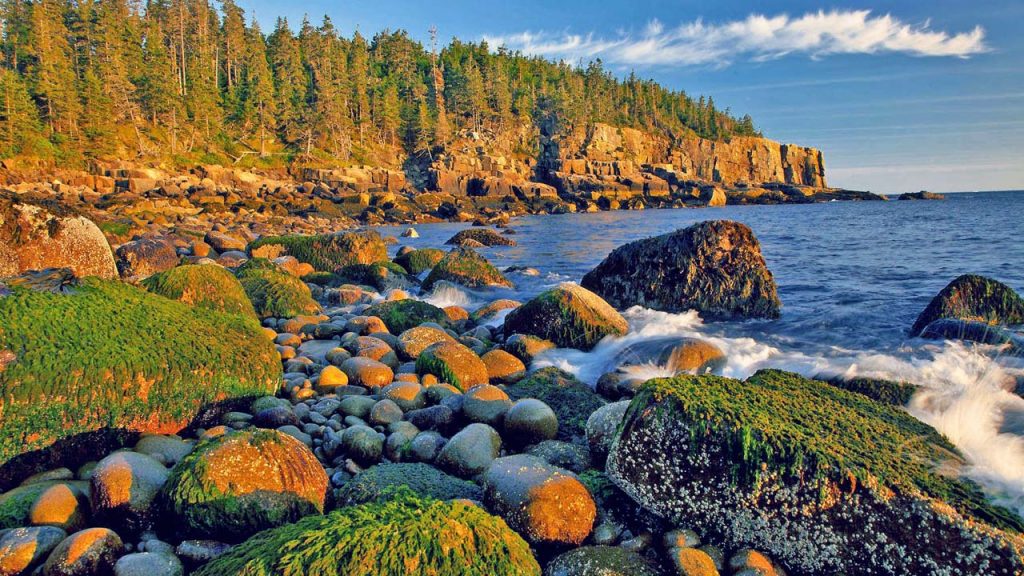Barcelona is a vibrant city with a rich cultural heritage, stunning architecture, delicious cuisine, and a lively atmosphere. Here are some of the best things to do in Barcelona:
Barcelona travel guide will help you to explore like a pro traveler. So let’s start from the beginning, It is one of the most visited places in the world. Barcelona, Catalan, Spanish is a city located on the coast of northeastern Spain. It is the capital and largest city of the Autonomous Community of Catalonia, as well as the second-most populous municipality in Spain. With a population of 1.6 million within the city limits, its urban area extends to many neighboring municipalities in the province and is home to about 4.8 million people, making it the fifth most populous urban area in the European Union, after Paris.
It is a large metropolitan area on the Mediterranean coast, bounded by Spain between the mouths of the Llobregat and Besos rivers, and is bounded on the west by the best de Colcerola mountain range, with the highest peak being 512 meters (1,680 feet) high.
Football:
barcelona is located in Spanish. Football Club Barcelona commonly referred to as Barcelona and colloquially known as Barça, is a professional football club based in Spain, Spain, that competes in La Liga, the top flight of Spanish football.
Barcelona is famous for football. The biggest league in the world is played and it is known as FCB in Barcelona. All kinds of games are held here. Many famous players play in FCB, including Messi, Neymar, Roland, and many more. The city has a rich cultural heritage in Spain, known for hosting world-class conferences and exhibitions and many international sports competitions in addition to the 1992 Summer Olympics, and today it is an important cultural center and an important cultural center. Major tourist destination. Particularly famous are the architectural works of Anthony Gaudi and Luis Domenech I Montaner, which have been designated as UNESCO World Heritage Sites.
Bunkers Del Carmel:
The beautiful and captivating place of Barcelona is the bunkers del Carmel. It is located at Carrer de Marià Labèrnia, s/n, 08032 Barcelona, Spain. If you want to see the whole of Barcelona, visit the caramel. The Bunkers of Carmel is a viewpoint from which you can see the whole city of Barcelona (360º city view). It is located at the top of the Turó de la Rovira in the vicinity of Carmel, with an elevation of 262 meters. During the Spanish Civil War, anti-aircraft warfare took place. And later the bunkers were established in one of the factory towns. Despite being popular as a bunker, the Turó de la Rovira never had a bunker on top, only the anti-aircraft warfare and its advantages.
If you want to visit Carmel Bunker Hill you have to take into account that you will have to walk uphill for a while. The bunkers are not directly accessible by public transport.
There are 3 ways to reach the view:
The Turó de la Rovira, perhaps the most beautiful viewpoint in Barcelona, was a military base with anti-aircraft weapons. This ‘Bunkers del Carmel’ cannon was placed in 1937 to protect Barcelona during the civil war (193-1939). For years the surroundings of the bunkers have been in great decline, but today only a few remnants of concrete can be seen of this artillery and the adjacent neighborhood has been significantly renovated. The area is now freely accessible especially at the beginning of the evening, Follow this road for almost a kilometer (the road has a very steep stretch!). At the top of the “Carrer de la Gran Vista” turn immediately right and immediately after twice left. Here you walk along Carrer de Mühlberg. After 500 meters you will arrive at the bunkers.
If you want to know more about Barcelona Travel, check out our Barcelona Travel Guide post. This post will make the journey to Barcelona completely easy for you.
Barri Gòtic:
The charming Gothic Quarter, or Bari Goutic, narrow medieval streets filled with trendy bars, clubs, and Catalan restaurants. Here you can find small galleries and antique shops in the Jewish district. The history of Barcelona began many years ago. Where Bari Gotic is today, in the middle of Rambla to the west and Vaya Leitana to the east. The Romans established a settlement on the hill of Mons Tab, called “Colonia Fventia Julia Augusta Pia Pattern Barcelona” or “Barsino” for about 133 BC. Soon a city wall was built – 8 meters thick and up to 18 meters high, with 78 protected towers. By the standards of that time, the 1270 m long wall was an attractive structure. Barcelona Museu de Historia shows the ruins of the Roman city. Craftsmen sell leather and jewelry near Barcelona’s cathedral, while flower stalls and street food vendors are busy on the street La Rambla.
Barri Gòtic:
The Barri Gòtic is the center of the old town (‘Ciutat Vella’) of Barcelona. The name means Gothic Quarter in Catalan and you will visit this (tourist) district during your city trip. The Gothic Quarter of Barcelona is located between La Rambla and Via Laietana, and between the Port of Barcelona and Ronda de Sant Pere. The Gothic Quarter is the oldest part of the city and as a result, centuries-old buildings have been preserved, some of which date from before the Middle Ages (and even from Roman times). At the time of Augustus, this place was chosen to establish a new colony. The persecution of the Jews in 1424 forced all Jewish families to leave Barcelona. Valuable trading contacts and knowledge are lost. No other district has so many monuments and attractions as Barri gòtic. When you travel to Barcelona, don’t forget to visit it.
.
El Born:
Barri del Born is an area between the Gothic Quarter and the Parc de la Ciutadella in the heart of Barcelona. Barcelona is a beautiful place and in fact, it is one. Market del Born is a former public market and one of the most important buildings in Barcelona, Catalonia, Spain, built of iron and is very old. Located on the lower and eastern side of the La Ribera neighborhood, it is the largest covered square in all of Europe and it marks the beginning of modernization in Catalan architecture, and at night cocktail bars and samba. The Basilica of Santa Maria del Mar exhibits ornate stained glass, while the famous Picasso Museum displays many masterpieces by the artist. Featuring an archeological site, the El Bourne Cultural and Memorial Center is the venue for an event in an old market building.
El Born:
We are open for you to enjoy your moment. Located in the Born district, the tourist heart of Barcelona, Alsur Café El Born is the ideal place to spend good times in the company of your friends. With our 4 environments (two areas with tables and sofas, the Bar, and the Terrace) and a balanced mix between Lounge and Restaurant, the place lends itself to sharing the best experiences with the best music, gastronomy, sweets, coffees, cocktails, and the Brunch every Sunday. Barri del Born has seen a rise in popularity in recent years, making it one of the most popular and popular areas in Barcelona. This is a great place for a night tour of the dark history of Barcelona! If you’re into the boho-artistic vibe of a more local-centric neighborhood (not to mention a large international community), this is where you should hang out in Barcelona.
Arc De Triomf:
Arc de Triomf Barcelona is one of the most beautiful and historic places in Barcelona. Its location is Pasig de Luis Companies, 08003 Barcelona, Spain. In 1888 Barcelona hosted a public exhibition and many stayed there. The Arc de Triomphe was built as the entrance to the fair, which was held at the Parc de la Ciutadella. The monument is classical in shape and proportions and has land-broken sculptures and decorative finishes that are full of symbolism. It became one of the iconic landmarks of the city. The Arc de Triomf was built in 1888 as the main entrance to the Barcelona World’s Fair. The Arc de Triomf is a winning arch in the Spanish city of Barcelona, Catalonia. Barcelona was built by architect Josep Villaseca I Casanovas as the main entrance to the World Fair.
Arc De Triomf:
Colored bricks are made in the Moodzar style, which has its roots in Moorish architecture. See if you can find the ornate Spanish coat of arms when you visit! Architect Josep Villaseca designed a monument of classical style and proportions as a metaphor for Barcelona’s respect for the countries and provinces participating in the exhibition. As a counterpoint, Villaseca chose to make arches out of bricks and decorated them with neo-Mudeza-style inspirational sculptural motifs that were very common in Spain at the time. The combination of red brick with the series of refrigerators around the arch makes it a uniquely beautiful landmark.
Tibidabo:
Tibidabo is a mountain overlooking Barcelona, located 512 meters above sea level from Bunker. Another nice addition to the most beautiful place in Barcelona. Its location is Plaça del Tibidabo, 3, 4, 08035 Barcelona, Spain. Tibidabo is the highest mountain in the Sierra de Collserola range. Tibidabo Amusement Park is an amusement park located in Tibidabo on the Colosselo Ridge in Barcelona. The park was created by entrepreneur Salvador Andrew in 1899 and opened in 1905. Tibidabo Cathedral del Sagarat is the highest peak in the city, overlooking Barcelona from Mount Tibidabo. In this scenic location, it can be seen from all over the city.
Tibidabo:
Especially when you walk to Rambla Catalunya or Passeig de Gracia, you will always see Tibidabo Cathedral on the horizon. It is the highest peak within the borders of Barcelona and thus Tibidabo offers 360-degree views internally over the sea, the city and its suburbs, and towards the peaks of Montserrat and Montserrat.
The park is still one of the oldest in the world It is the longest-running amusement park in Spain and the third oldest park in Europe. Once you reach the top, you will find a cathedral, a telecommunication tower, and an amusement park. There is a phrase quoted here for you to know, which I mean to you, Satan said to Jesus when they saw all the kingdoms of the world and their glory from a high mountain. The name of the mountain in Barcelona thus refers to the popular tradition that it was a very high mountain. The word TB Dabo is part of the inscription on the central dome of St. Peter’s Basilica in Vatican City, although in that case it is drawn from the words of Jesus of St. Peter in Matthew 16:19. On a trip to Barcelona, I would suggest you travel to Tibidabo.
Sagrada Família:
 Best tourist attraction Barcelona
Best tourist attraction Barcelona
Sagrada família Barcelona is one of the most beautiful and historic places in Barcelona. Location Carrer de Mallorca, 401, 08013 Barcelona, Spain. The Basilica de la Sagrada família, also known as the Sagrada família, is a large unfinished small basilica in the Example district of Barcelona, Catalonia, Spain. Designed by Catalan architect Anthony Gaud, his work on the building is part of the UNESCO World Heritage Site. Construction of the Sagrada família began on 19 March 182. It is still under construction. The expected completion date is 2026, however, it is possible that it could be extended to 2040. When it is completed, its construction will take longer than the Great Pyramid of Egypt. The temple is one of the most interesting landmarks of today.
Gaud had earlier predicted in his time that “people from all over the world would come to see the Sagrada Family” and that the temple would “influence the industry”. And it has been more than a hundred years of basilica-building activity. All this time, the temple is many years old. The temples here are ancient and made of stone. If you visit the Barcelona travel guide, don’t forget to visit the temples. The architectural styles here are modernity, Art Nouveau architecture, Gothic-Renaissance architecture, Noucentisme, and Spanish Gothic architecture. Because it is so beautiful and natural.
Casa Comalat:
Casa Comalat is a mountain overlooking Barcelona, located 512 meters above sea level from Bunker. Another nice addition to the most beautiful place in Barcelona. Its location is Avinguda Diagonal, 442, 08037 Barcelona, Spain. As a tribute to Gaud, Casa Komala contains many elements of Gaud’s architecture and is one of the key examples of the indigenous Art Nouveau in Barcelona: modernity. The two distinct facades, both showing the effect of the curve redolent of Reus-born Maestro’s work, arouse our curiosity to take a closer look at this beautiful and unique building. The architectural style here is Art Nouveau Architecture. It is a beautiful and captivating place to visit. You won’t find as many tourists here as you would at Casa Batlló or Casa Milà, so if you want to stay away from the crowds, this is your destination.
Casa Comalat
Looking for good photo background, this might be for you. One reason Casa Comalat is less well-known is that it is not one of Antoní Gaudí’s buildings – it was built in 1911 by Salvador Valeri I Popurull. Casa Comalat is a private home – so you can’t look inside. The building is surrounded by a turret in the shape of a Harlequin hat adorned with shiny green pottery. This colorful element dominates the back of the building which overlooks Carrer Rosselló and is more open and more informal in style. Irregular wooden galleries give the facade a vibrant look, and ceramics that decorate the entire facade give a splash of color. The parabolic arches on the ground floor doors give the building its glorious feel and are another example of the beauty of this unique building.
La Boqueria:
The beautiful and captivating place of Barcelona is the bunkers del Carmel. It is located at La Rambla, 91, 08001 Barcelona, Spain. Mercat de Sant Josep de la Boqueria, often known as La Boqueria, is a large public market in Barcelona, Catalonia, Spain’s Ciutat Vella district, and one of the city’s main tourist landmarks, with entrances from La Rambla, not far from Barcelona’s Opera House Liceu. We have been the heart of the city since 1836, and every day more than 200 merchants make their blinds, ready to offer you the local and international gastronomic products of choice. The best food menu here includes delicious Hispanic market-style food that tends to be shared and eaten.
La Boqueria:
The name ‘Mercat de la Boqueria’ comes from the old Catalan translation that would say as much as ‘place where billy goat meat is sold’. From the Ramblas, you can easily visit the colorful and fragrant fresh market. Barcelona’s fresh produce market is located halfway down the Ramblas at the Liceu metro stop. Fresh fish, Catalan sausages, huge hams, cheeses, fruit drinks, and colored candy stalls; look, smell and taste especially at the ‘Sant Josep’ market! From healthy Peruvian ceviche to Mexican tacos and Argentine-inspired Asado, dishes such as lamb Picanha and beef fillet kabob are cooked on charcoal. The shared plates for eating include paella, which is cooked slowly, in a traditional oven for a delicious, smoky flavor, and durable whole fish from our coal oven.
Parc De La Ciutadella:
The Parc de la Ciutadella is a park on the northeastern edge of Ciutat Vella, Barcelona, Catalonia, Spain. The most beautiful and captivating place is the Parc De La Ciutadella. It is located at Passeig de Picasso, 21, 08003 Barcelona, Spain. For decades following its creation in the mid-19th century, this park was the city’s only green space. The Parc de la Ciutadella is the largest park in Barcelona and is also very popular with the residents of the city. Parc de la Ciutadella was created in 1888 and houses a monumental waterfall, a pond, and a romantic English-style garden, surrounded by two tree-lined boulevards. Various museums and the Tiergarten (zoo) of Barcelona are also located on the site. The Parc de la Ciutadella has a long history. Originally there was a star-shaped fort designed by Prosper Verboom in 1715 for the former King Felipe V.
Parc De La Ciutadella:
The citadel was built for use by his army in fighting the Bourbon kings. After an 18-month siege, the fortress fell and was used as a prison in Napoleon’s times. In 1888 the park was used for the world exhibition. During this phase, many buildings were built in the Parc de la Ciutadella. Located in the Born district, the park is a 15-minute walk from the Barri Gòtic. It is an oasis of calm in the middle of a busy city, with lots of greenery, paths, and playgrounds for children. It is 30 hectares in size and the gardens were designed by French landscape architect Jean Forestier. They surround various fountains, some of which were designed by Antoni Gaudí.
Casa Batlló:
Casa Batlló is a building in the center of Barcelona. It is located at Pg. de Gràcia, 43, 08007 Barcelona, Spain It was designed by Antoni Gaudí and is considered one of his masterpieces. A remodel of a previously built house was redesigned in 1904 by Gaudí and has been refurbished several times after that. Paseo de Gràcia is the modernist avenue par excellence. Two of the icons of this artistic style are found in this “Golden Mile” of Barcelona: Casa Milà, popularly known as La Pedrera, and Casa Batlló, which now invites you to discover and “listen” to its brand new restored façade, thanks to free audio that is downloaded to the mobile and that allows understanding the work carried out, as well as discovering myths, legends and hidden layers of Gaudí’s work.
In addition
the general visit to Casa Batlló includes a SmartGuide that invites you to take a trip to the beginning of the 20th century with the experience of augmented reality. The inauguration of the remodeled façade of this building, protected as a World Heritage Site by UNESCO, completes the recent work on the main floor of the building, in which original stuccoes from the walls and decorative objects such as the lamp in the Hall have been recovered. the main floor of this floor with large windows with views over Paseo de Gracia. When it was the residence of the Batlló family, dinners and parties were held there. Today, this space is still alive, welcoming visitors and cultural and artistic events in the city.



